Azure Stream Analytics
Overview
Azure Stream Analytics, a flagship offering from Microsoft Azure, is engineered for real-time analytics. This service transforms the vast streams of data generated every second into actionable insights. As businesses are propelled into the digital age, the ability to analyze data as it flows provides a significant edge. Whether it's IoT data from sensors, user interactions on apps, or financial transactions, Azure Stream Analytics processes it seamlessly. Its integration with other Azure services ensures a cohesive ecosystem. For businesses aiming for swift, data-driven decisions, this tool is indispensable, bridging the gap between raw data and meaningful action.
What is Azure Stream Analytics
Azure Stream Analytics (ASA) is an event-processing engine that enables the development and deployment of real-time analytical solutions. These solutions seamlessly integrate with various Azure services and assist organizations in making the most out of their data streams.
Key Features
-
Real-Time Data Processing:
Azure Stream Analytics primarily excels in dealing with real-time data processing, providing insights instantly as the data streams through the platform.
-
Integration Capabilities:
ASA ensures smooth integration with several Azure services and solutions like Power BI, Azure Data Lake Storage, and Azure Functions, thereby providing a versatile analytics solution.
-
Ease of Use with SQL:
The use of familiar SQL syntax allows developers and data analysts to construct complex analytics queries without a steep learning curve, making Azure Stream Analytics a user-friendly solution.
-
Resilient Processing:
Azure Stream Analytics is structured to ensure dependable data processing. It commits to an "at-least-once" delivery guarantee, ensuring that no data point is missed during transmission. Additionally, the platform incorporates built-in checkpointing, which periodically saves the state of data streams. This ensures that in case of any interruptions or failures, data processing can resume from the last saved checkpoint rather than starting anew, thereby minimizing data loss and processing delays.
Benefits
-
Quick Insight Generation:
Azure Stream Analytics delivers rapid insights from streaming data, aiding organizations in immediate decision-making processes.
-
Reduced Complexity:
The ability to write queries with SQL significantly reduces the complexity involved in real-time analytics, enabling businesses to focus more on insights rather than the technicalities of data processing.
-
Flexible Scalability:
Azure Stream Analytics provides the flexibility to scale up or down based on requirements, ensuring optimal resource usage and minimized costs.
Limitations
-
Limited Complex Event Processing:
While Azure Stream Analytics excels in various areas, there may be limitations in handling certain complex event-processing tasks, especially when compared to specialized event-processing engines.
-
Restricted Advanced Analytics:
While Azure Stream Analytics offers notable analytical capabilities, it doesn't reach the comprehensive depth and breadth of features found in platforms exclusively designed for advanced analytical tasks.
-
SQL Query Limitations:
The SQL-like language, despite being user-friendly, might pose restrictions when working with highly intricate and specialized data transformations or analytics.
Alternatives
-
Apache Kafka:
Widely recognized for its high-throughput and fault-tolerant stream processing, Apache Kafka provides a more open-source approach towards stream analytics.
-
Amazon Kinesis:
As part of AWS, Amazon Kinesis offers a set of robust tools for managing and analyzing streaming data, and it could be preferred in AWS-centric environments.
-
Apache Flink:
A framework and distributed processing engine for stateful computations over unbounded and bounded data streams, known for low-latency and high-throughput data delivery.
How does Azure Stream Analytics Work?
Azure Stream Analytics (ASA) is structured around a robust pipeline that follows three main stages: Ingest, Analyze, and Deliver. This framework ensures the streamlined processing and delivery of real-time analytics.
Ingest
The first stage involves the collection or ingestion of data from various sources, some of them are:
-
IoT Devices:
ASA can directly ingest data from a plethora of Internet of Things devices, capturing valuable information in real-time.
-
Logs, Files:
System logs, transaction files, or any other type of structured/unstructured data can be fed into the pipeline for analysis.
-
Customer Data, Financial Transactions:
Crucial data points like customer interactions or financial details can be streamed into the platform.
Analyze
Once the data is ingested, it is analyzed in real-time:
-
Continuous Intelligence/Real-time Analytics:
Azure Stream Analytics processes the streaming data continuously, providing insights and intelligence in real-time.
-
Reference Data Integration:
It can merge streaming data with static data (often termed "Reference Data"), which might be stored in SQL databases or Blob storage. This combination allows for richer and more contextual analytics.
-
Real-time Scoring with Azure ML:
ASA can integrate with Azure Machine Learning services to apply machine learning models on the streaming data, offering predictive analytics or anomaly detection functionalities.
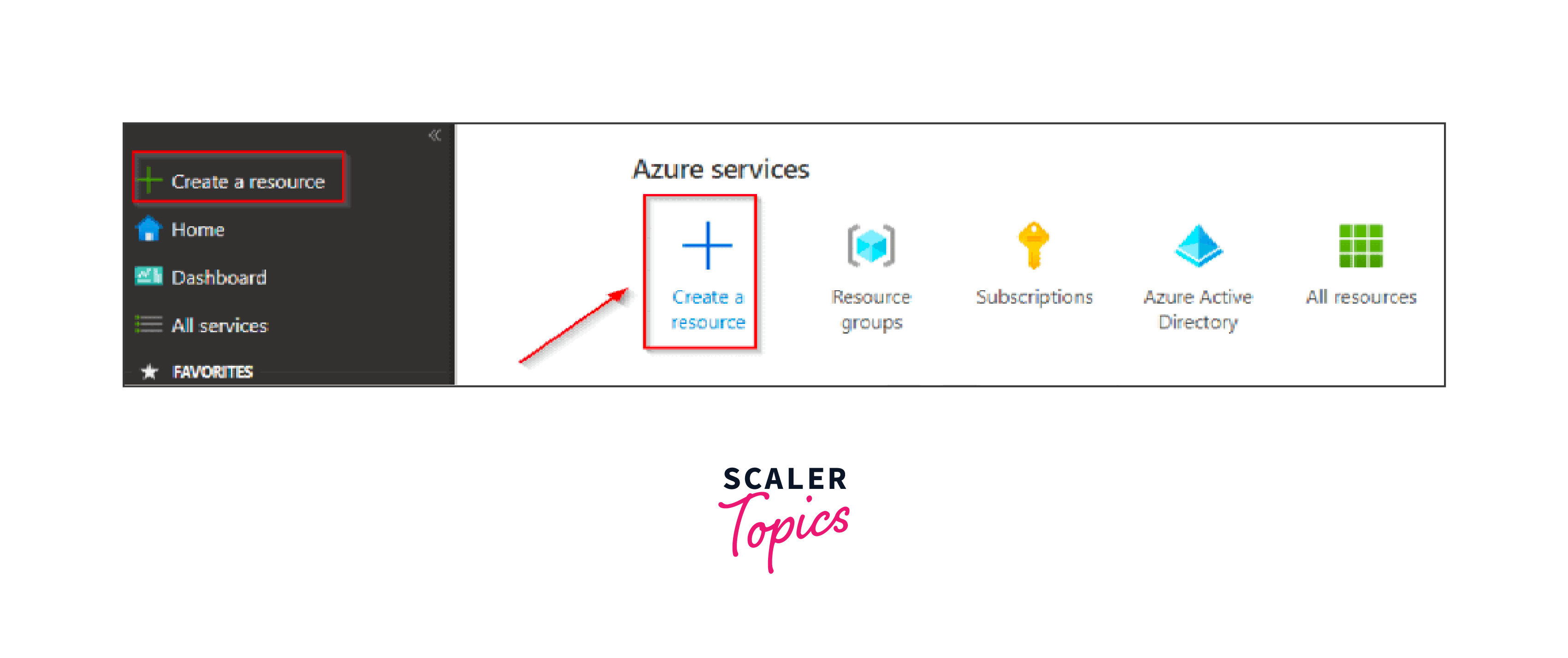
Deliver
After the analysis, the derived insights or processed data are delivered or stored:
-
Alerts and Actions:
ASA can trigger real-time alerts or actions using services like Event Hubs, Service Bus, or Azure Functions based on the results from the analysis.
-
Dynamic Dashboarding:
Integration with platforms like Power BI ensures that insights are visually presented, offering dynamic dashboarding capabilities.
-
Data Warehousing:
Processed data can be sent to Azure Synapse Analytics for more in-depth analytics or warehousing purposes.
-
Storage/Archival:
For long-term storage or archival, ASA supports various storage solutions, including SQL DB, Azure Data Lake (both Gen 1 & Gen 2), Cosmos DB, Blob Storage, and more.
Azure Stream Analytics Use Cases
-
IoT Solutions:
Utilized in gathering insights from data streaming from IoT devices in real-time.
-
Real-Time Dashboarding:
Used to power real-time dashboards to visualize data and generate instant insights.
-
Anomaly Detection:
Utilized for monitoring data to detect anomalies and trigger alerts or actions accordingly.
-
Predictive Maintenance:
Analyzing data from machinery and equipment to predict and prevent potential breakdowns.
Steps to Create a Stream Analytics Job with Azure Portal
-
Step 1:
Log into the Azure Portal.
-
Step 2:
Select the "Create a Resource" button to initiate a new resource addition.
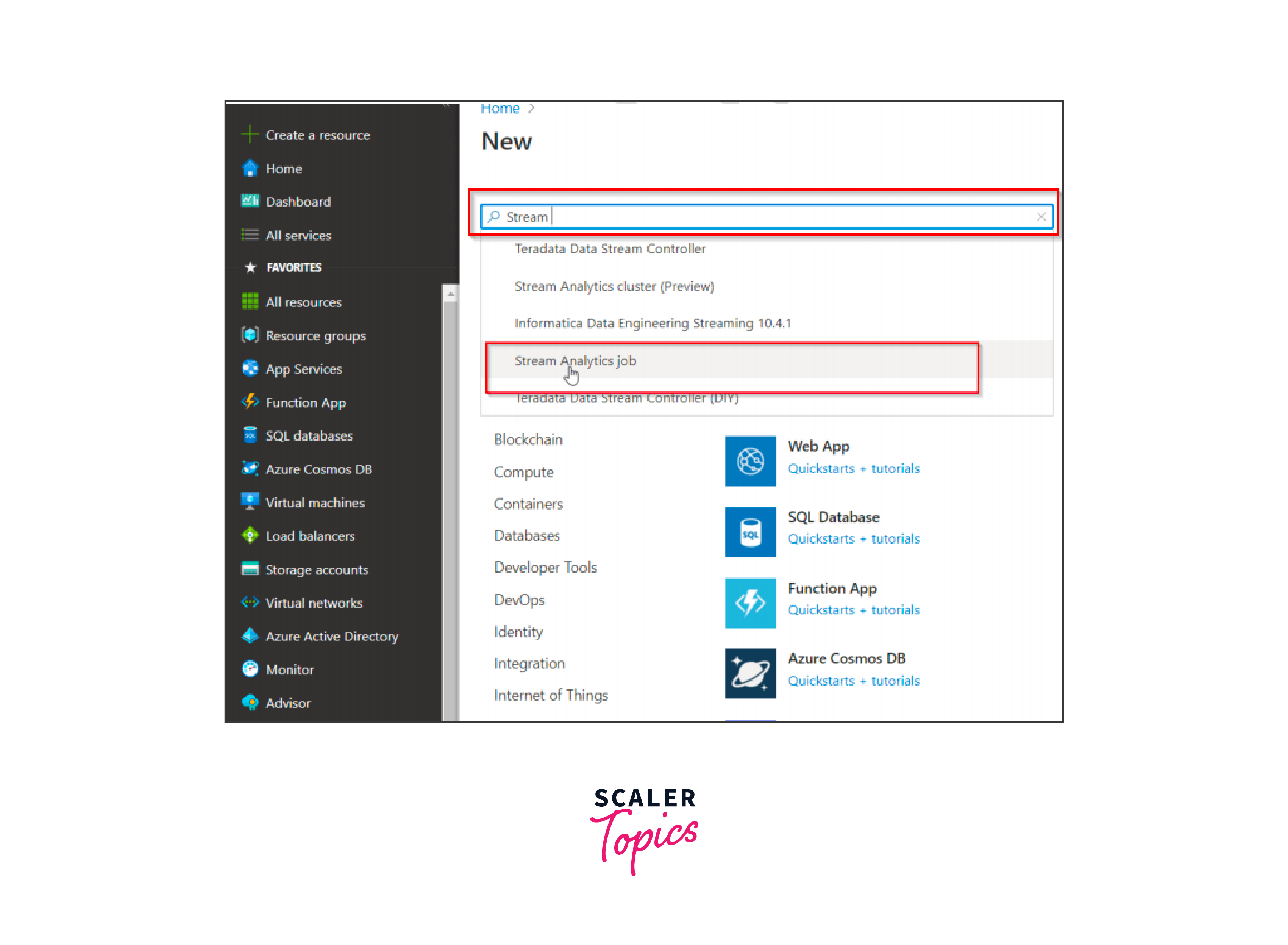
-
Step 3:
In the provided search field, input "Stream" or "Stream Analytics Job". Then, choose the "Create" option.
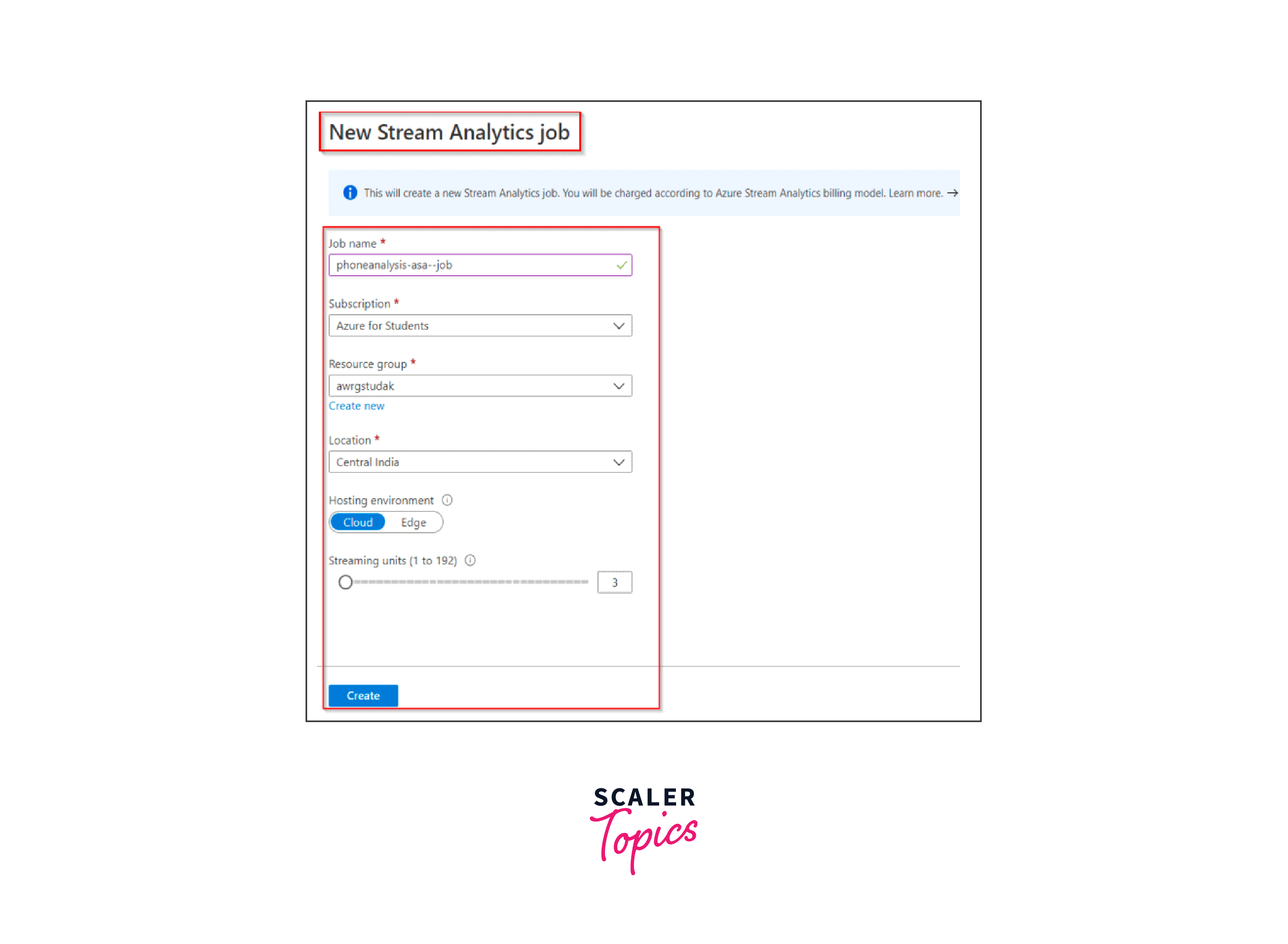
-
Step 4:
Within the "New Stream Analytics job" interface (note: if you don't have an existing resource group, you'll have the opportunity to establish one), provide the necessary details and select "Create".
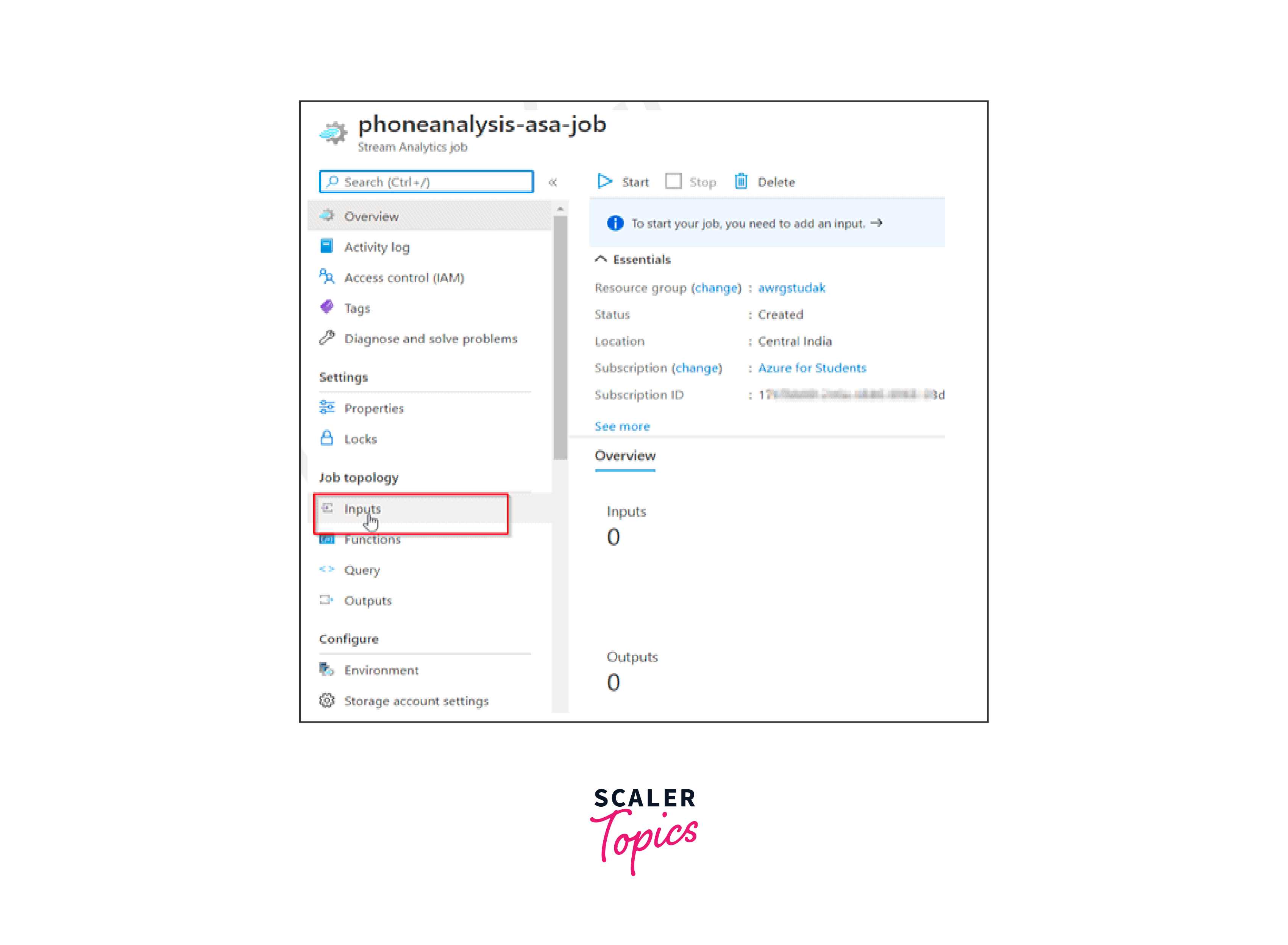
-
Step 5:
After the deployment wraps up, opt for the "Go to resource" button.
-
Step 6:
Navigate to the "phoneanalysis-asa-job Stream Analytics job" section. On the left sidebar, under the "Job topology" category, opt for "Inputs" to determine the inputs for the Stream Analytics job.
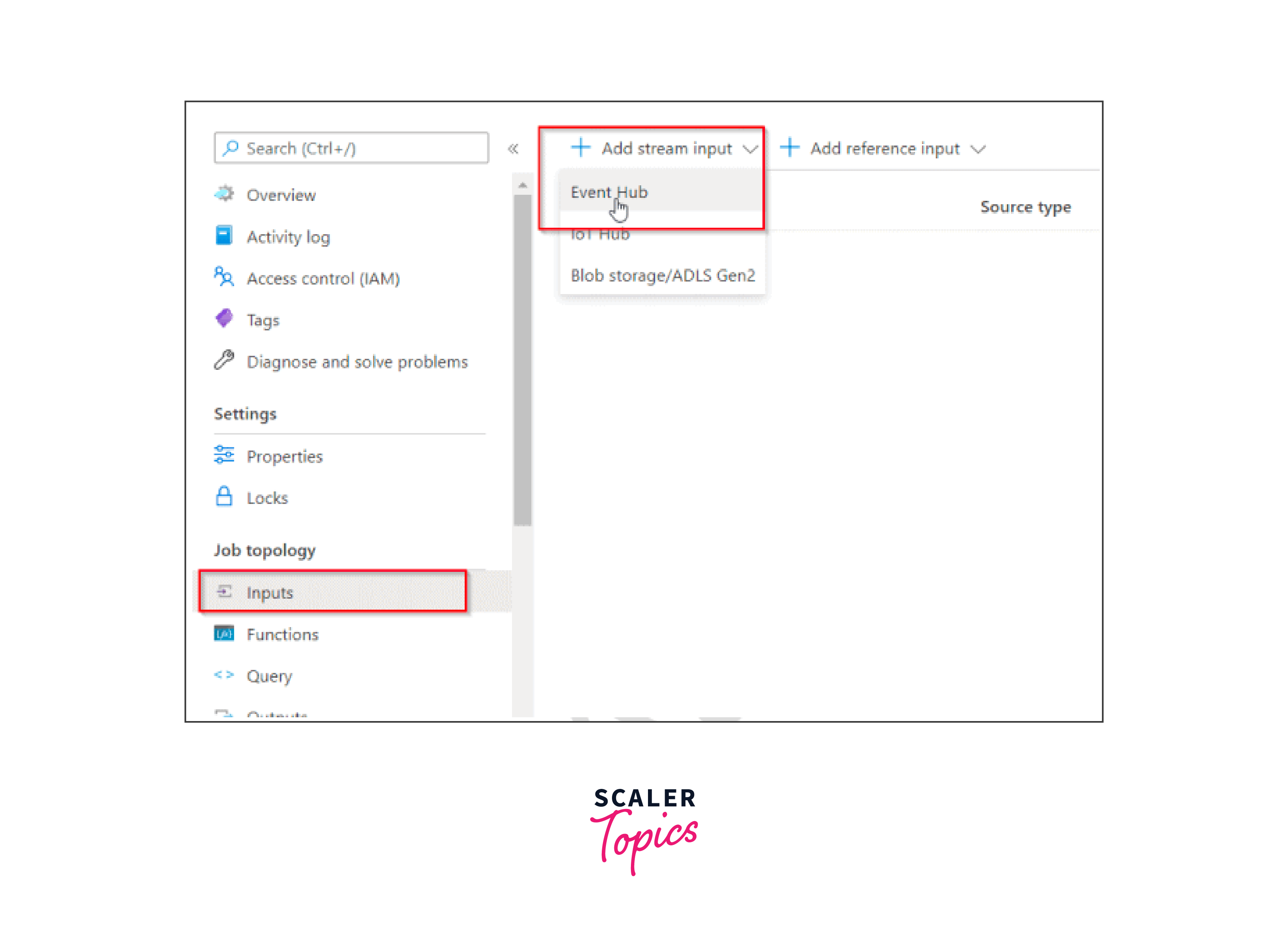
-
Step 7:
Within the "Inputs" section, hit "+ Add stream input" and then select "Event Hubs" (an extensive data streaming service capable of managing numerous events simultaneously).
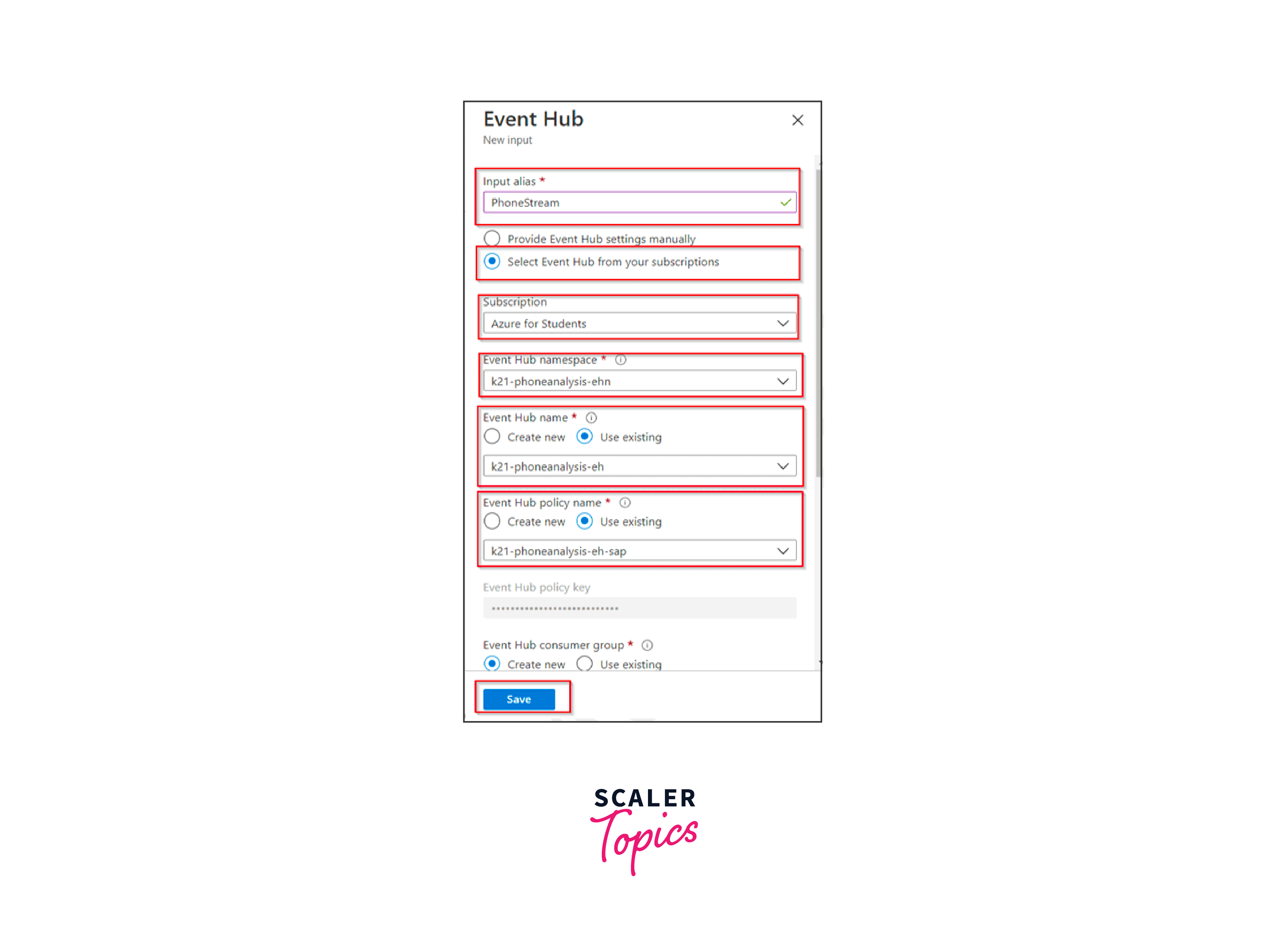
-
Step 8:
On the ensuing "Event Hub" page, input the requested details and hit "Save". Post-completion, you'll observe the "PhoneStream Input" job listed within the input section.
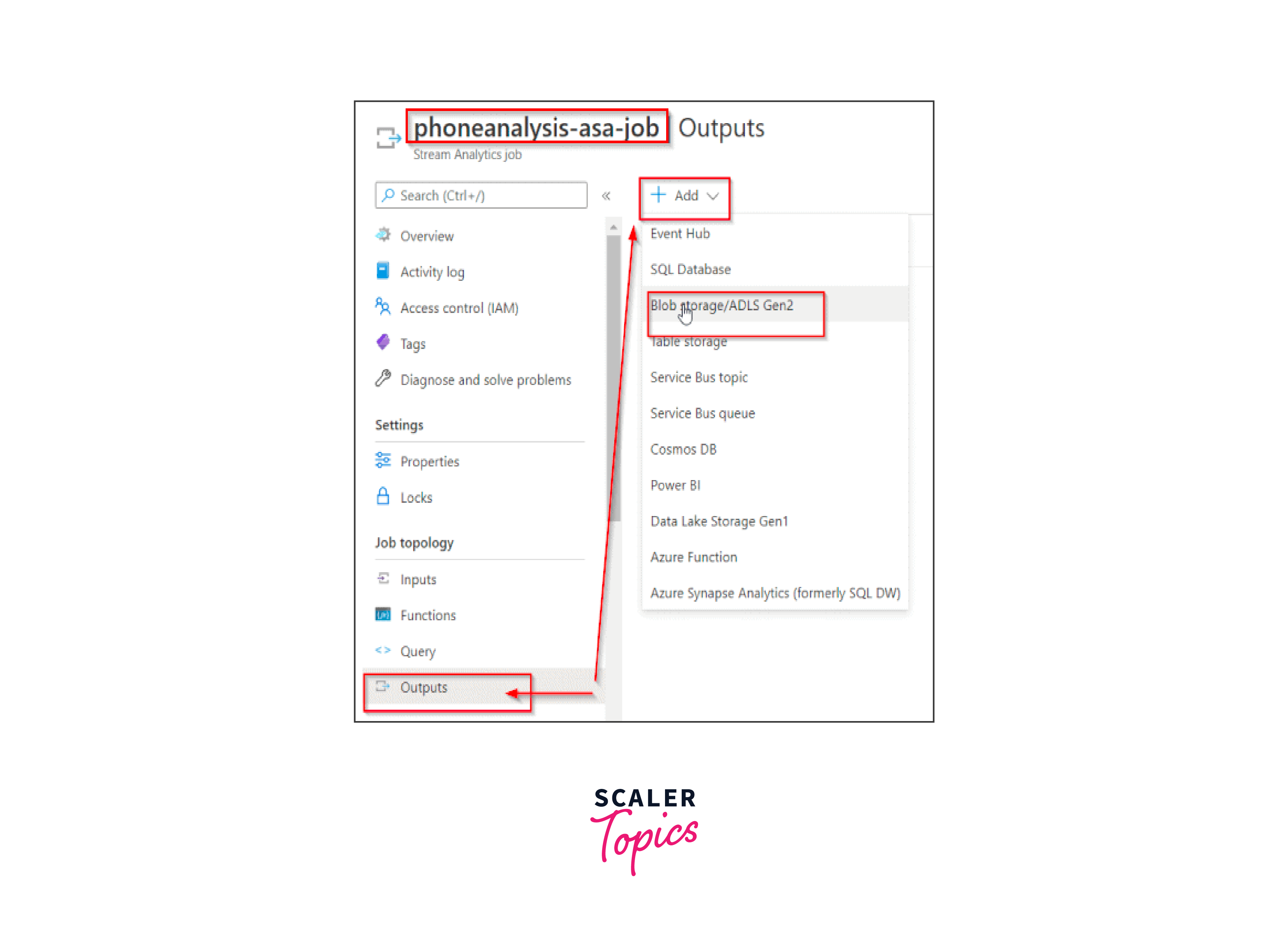
-
Step 9:
Navigate again to the "phoneanalysis-asa-job Stream Analytics job" section. On the left sidebar, under the "Job topology" category, opt for "Outputs" to determine the outputs for the Stream Analytics job. Then, choose "+ Add" followed by "Blob Storage".
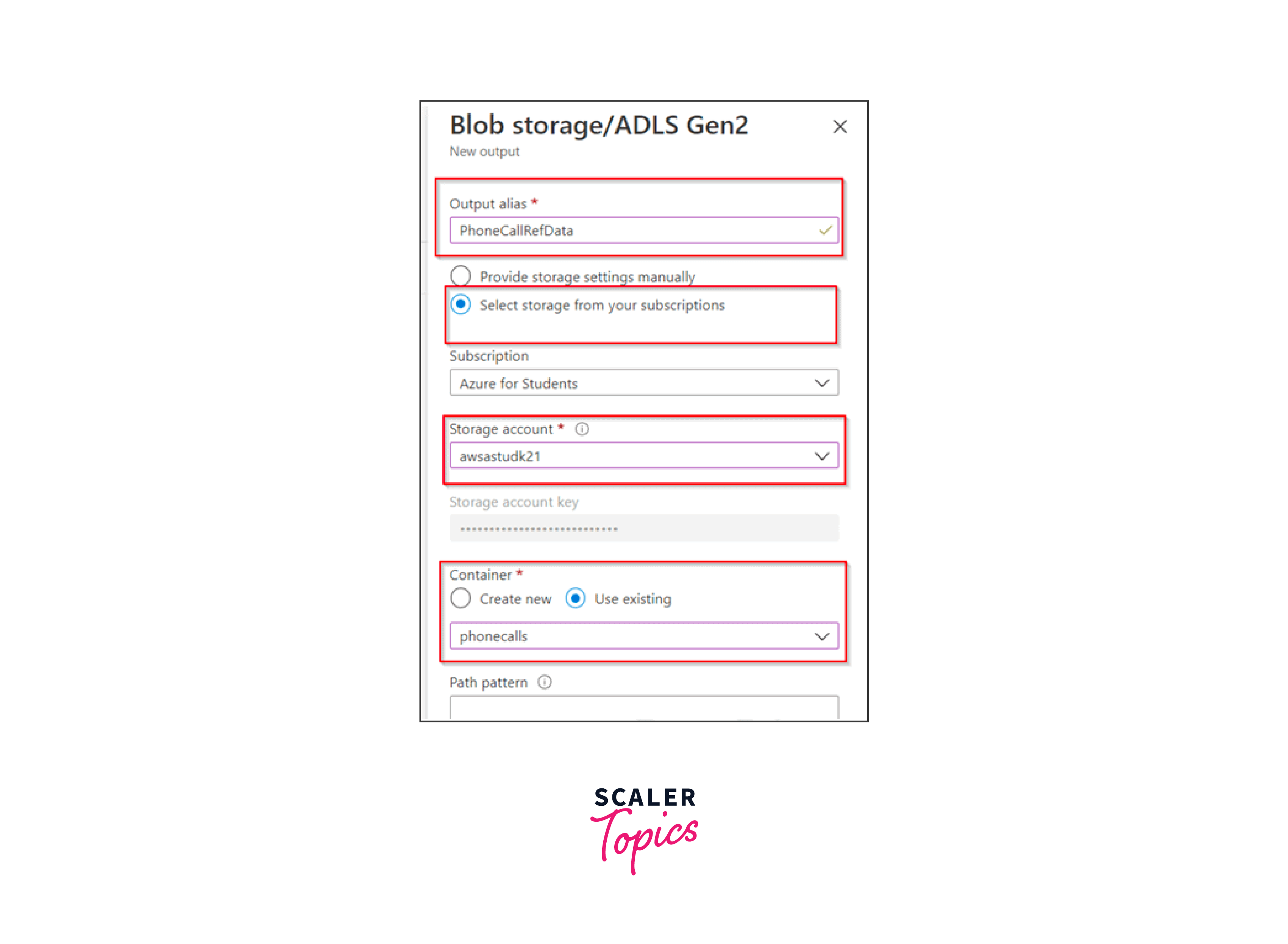
-
Step 10:
In the resulting "Blob storage" section, provide or select the pertinent details. Within the dropdown, set "Min row" to 10 and "Max time" to 5. Conclude by selecting "Save" and exit to the "Resource Group" page.
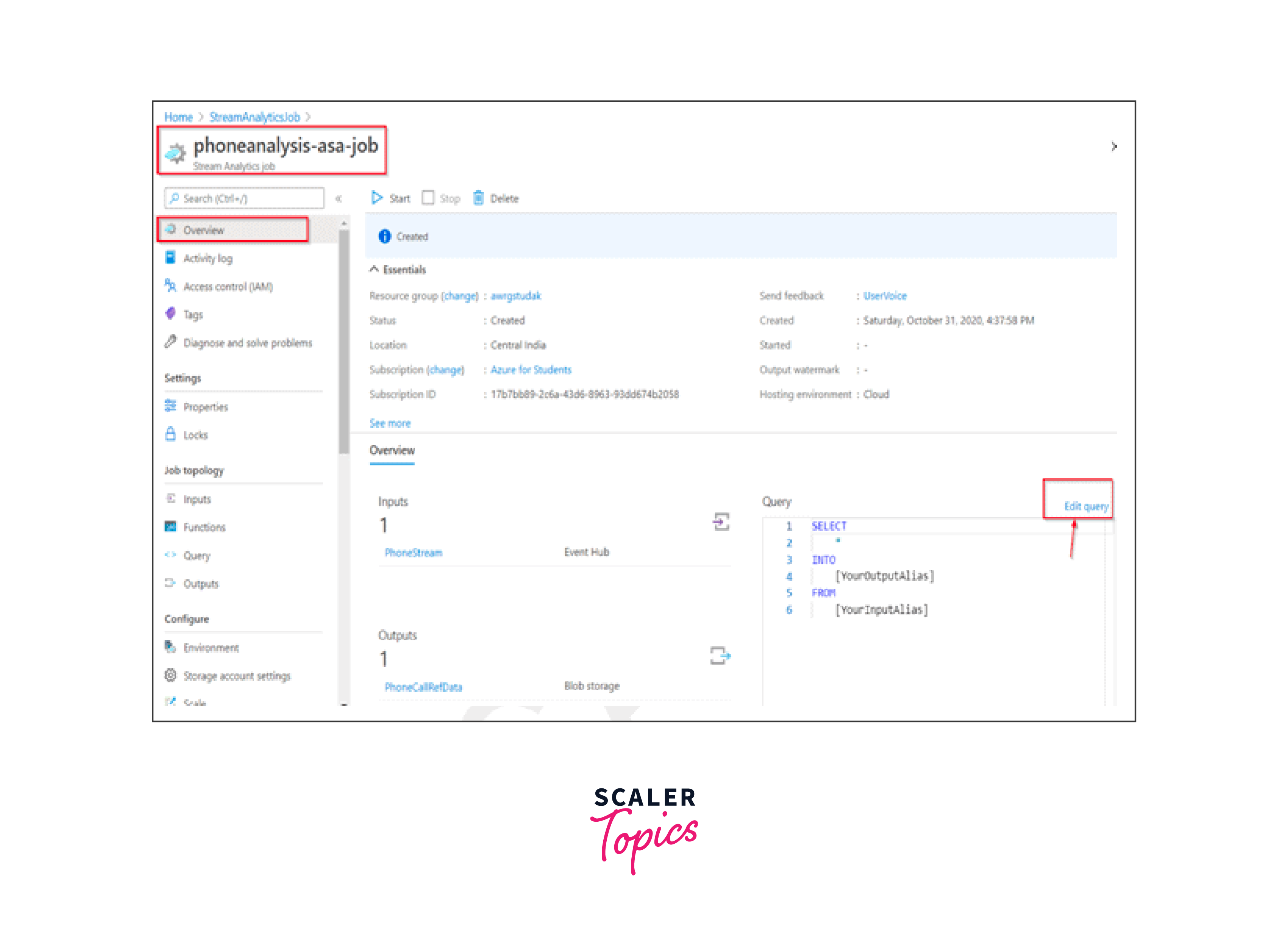
-
Step 11:
Within the central "Query" section of your "phoneanalysis-asa-job" interface, click "Edit query".
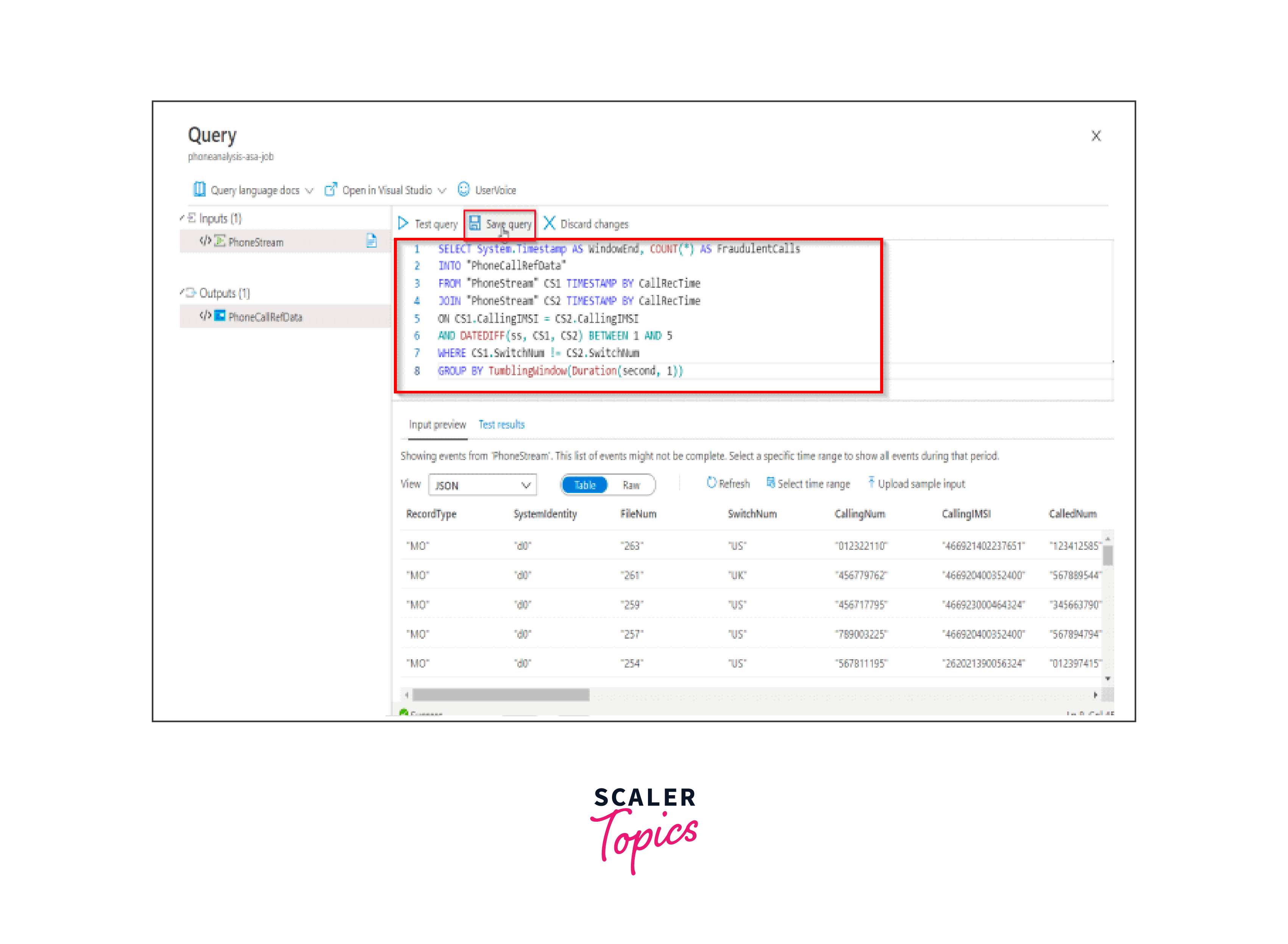
-
Step 12:
Overwrite the pre-filled query with the new one provided and secure your changes by saving.
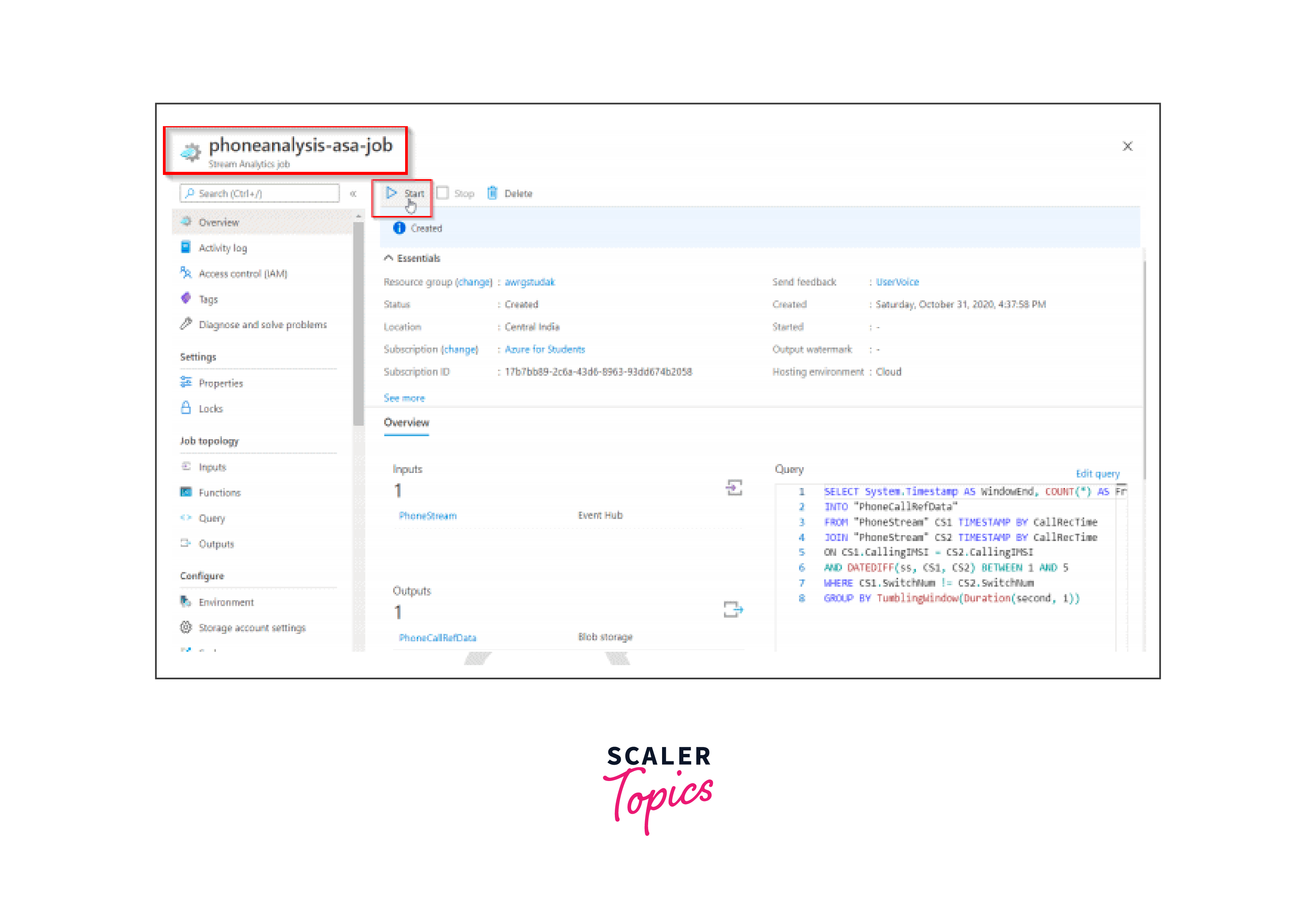
-
Step 13:
Within the same "Query" section, initiate the Stream Analytics job by selecting the "Start" button.
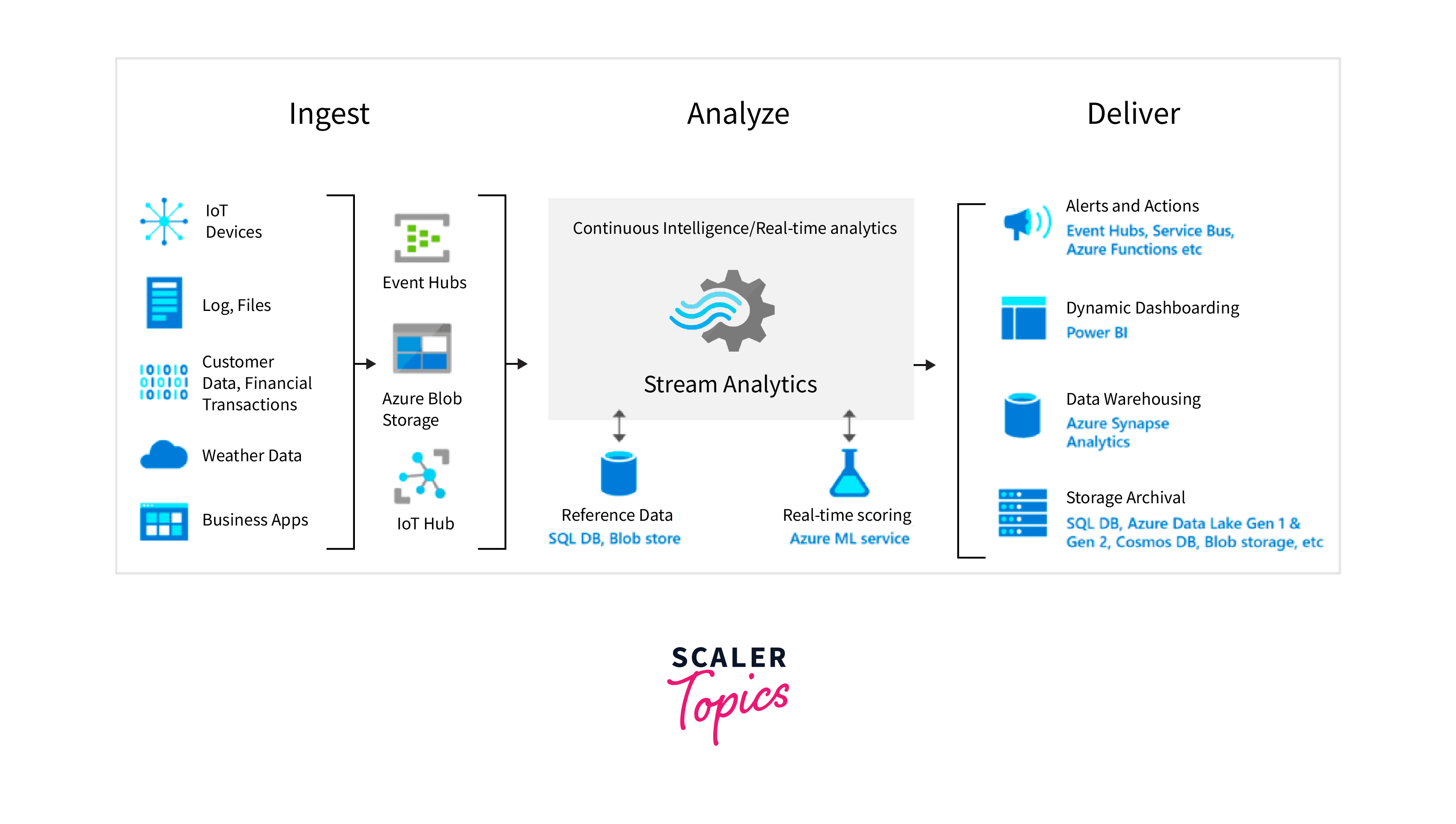
-
Step 14:
In the subsequent "Start-Job" prompt, opt for "Now" and finalize by hitting "Start".
FAQs
Q. Can Azure Stream Analytics handle large-scale data streams?
A. Yes, it is designed to manage large-scale, high-throughput data streams efficiently.
Q. Is it possible to use machine learning models with Azure Stream Analytics?
A. Yes, Azure Stream Analytics allows the integration of machine learning models for scenarios like anomaly detection and predictions.
Q. Can Azure Stream Analytics process data from IoT devices?
A. Yes, it can ingest and process real-time data streaming from IoT devices and solutions.
Conclusion
- Azure Stream Analytics is a powerful real-time data processing service within the Azure ecosystem, allowing businesses to derive insights from streaming data.
- Through its seamless integration with various Azure services, it caters to diverse input sources and output destinations, making it a versatile choice for handling large data streams.
- Setting up a Stream Analytics job is straightforward within the Azure Portal, with intuitive interfaces guiding users through data input, query formation, and output determinations.
- The service's scalability, combined with its real-time processing capabilities, makes it ideal for a myriad of applications, from IoT device analytics to financial data processing.
- While Azure Stream Analytics offers numerous benefits, it's crucial for businesses to assess their specific needs, considering possible limitations, and exploring alternatives if necessary.
